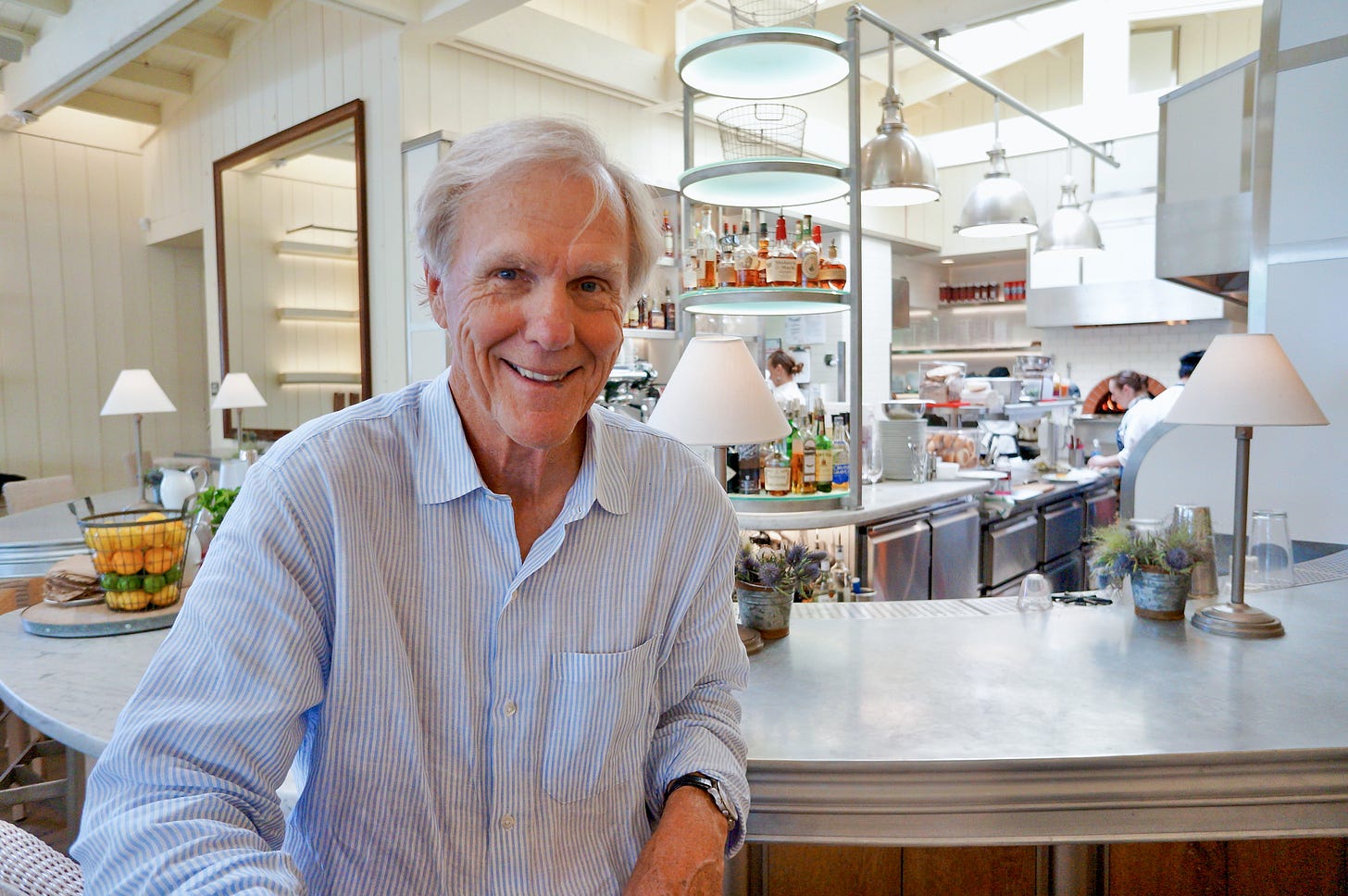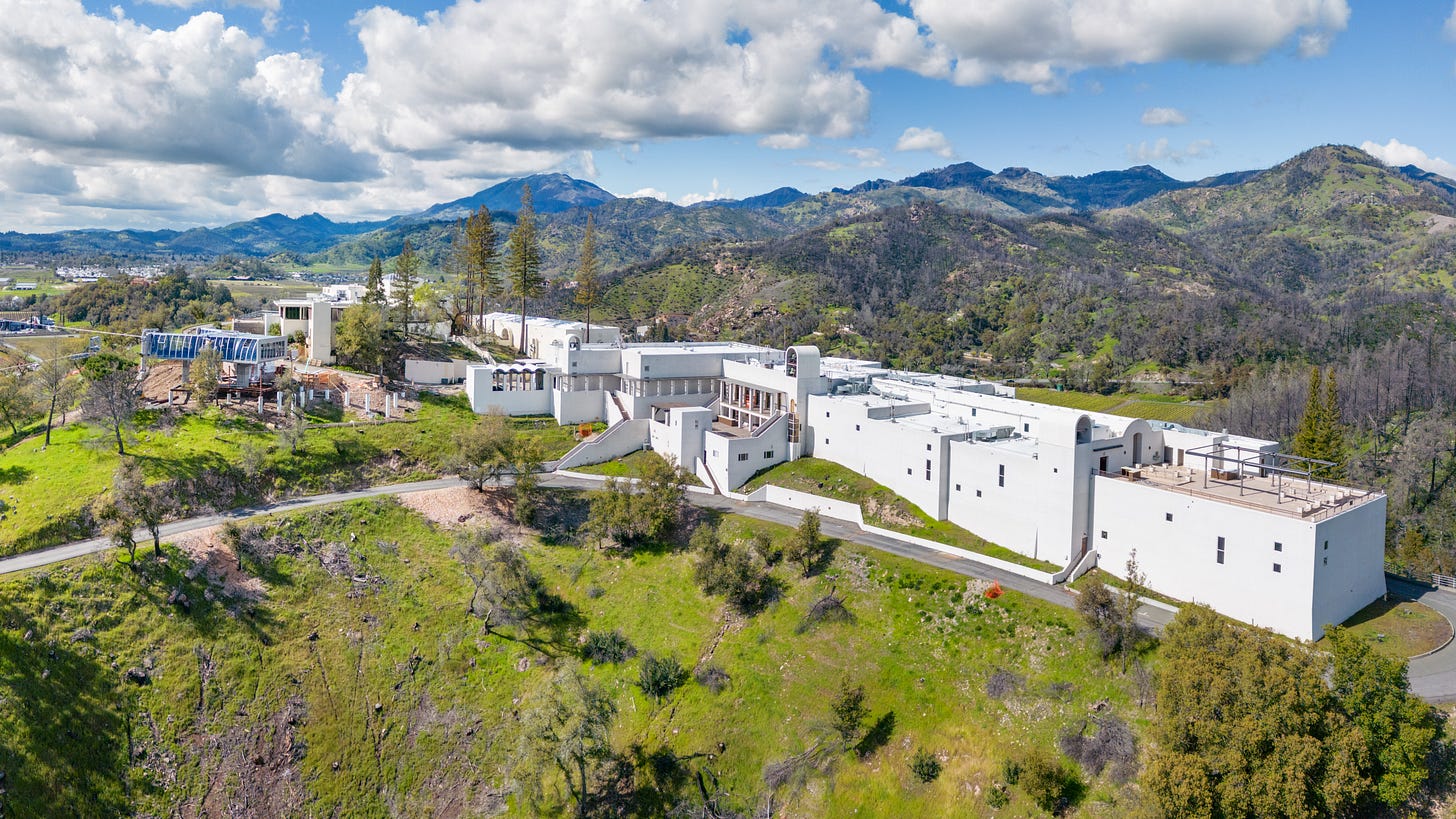Howard Backen, Architect Who Defined Napa Valley's Aesthetic, Dies at 88
NAPA VALLEY, Calif. — Howard J. Backen, FAIA, a visionary architect whose designs transformed Napa Valley and beyond, died Monday at the age of 88, surrounded by his loving wife, Ann, and close family members. Backen’s work, renowned for its sophisticated country elegance, has left an indelible mark on the region, shaping its architectural landscape and lifestyle.

Born in Montana in 1936, Backen moved to Roseburg, Oregon at a young age. His early fascination with architecture, influenced by his architect uncle, led him to the University of Oregon, where he graduated with a Bachelor of Architecture in 1962. Afterward, he moved to San Francisco, where he began his career at Wurster, Bernardi & Emmons, absorbing William Wurster’s practical and detailed approach to design.
In 1967, Backen co-founded Backen, Arrigoni, and Ross (BAR Architects) with fellow University of Oregon graduates Robert V. Arrigoni and E. Bruce Ross. The firm quickly grew to become one of the leading architectural practices on the West Coast. Among their notable projects were Robert Redford’s Sundance Institute, George Lucas’ Skywalker Ranch, MGM Studios Theme Park and Disney’s Sound Studios in Burbank.
Backen was significantly involved in the design of Robert Redford's Sundance Resort in Utah, a high-profile project that showcased his ability to blend architecture with the natural landscape. The resort, designed to harmonize with its surroundings, reflects Backen's philosophy of integrating buildings with their environment to create a seamless experience for visitors.
Backen's most rewarding project during this period was the Delancey Street Foundation’s headquarters in San Francisco, a rehabilitation institute for former convicts and drug abusers. The project received the Urban Land Institute’s Award of Excellence in 1992 and showcased Backen’s ability to turn hopes and dreams into reality, as noted by Mimi Silbert, co-founder of the Delancey Street Foundation.
In 1984, President Ronald Reagan honored Backen’s firm with the first Presidential Award for Design Excellence for The Gardens, a housing project in San Mateo. His work during the 1980s also included the Aspen Institute for Humanistic Studies in Aspen, Colorado, prototype stores for Pottery Barn and Stars Restaurant in Singapore.
In 1996, Backen founded Backen & Gillam Architects in Napa Valley with James Gillam. The firm, now known as Backen & Backen, has designed over 300 upscale homes, 60 wineries, seven major resorts and 40 restaurants. Their projects include the Napa Valley Reserve, an equestrian and performing arts center. The firm’s commitment to regenerative design and stewardship of the land is reflected in their holistic approach to architecture.
One of Backen’s most iconic projects is the Sterling Vineyards winery, notable for its architectural features. Situated on a hilltop in Napa Valley, the winery is accessible via an aerial tram, providing visitors with stunning views of the surrounding vineyards. Inspired by the white-washed buildings of the Greek island of Mykonos, Sterling Vineyards stands out for its distinctive and memorable appearance. The architecture integrates well with the natural landscape, creating a harmonious and aesthetically pleasing environment for wine tasting and tours.
Backen’s designs have become synonymous with Napa Valley’s aesthetic, characterized by rustic simplicity and a seamless blend of indoor and outdoor spaces. His work emphasized natural materials like timber, brick and stone, creating a harmonious connection with the landscape. This approach not only defined the look of Napa Valley but also influenced residential and commercial architecture worldwide.
Backen designed several other notable wineries, including Harlan Estate, known for its elegant design that integrates with the landscape; Cliff Lede Vineyards, with its sophisticated design that complements the vineyard’s setting; Dana Estates, reflecting Backen’s signature style of harmonizing buildings with the environment; and OVID Napa Valley, featuring low-profile buildings that conform to the rugged ridge topography and incorporate materials from the site itself.
His residential projects include many modern-day California farmhouses, capturing the essence of the American farmhouse while integrating Scandinavian and French elements. He also designed Bill Harlan’s Napa Valley home, a U-shaped redwood bungalow carefully sited to take advantage of the natural landscape, including a pond and croquet lawn.
Backen & Backen Architecture also played a significant role in designing multiple retail stores for RH (formerly Restoration Hardware) worldwide. Their work includes the RH Greenwich Gallery in Connecticut and other prominent RH locations. The Gallery at the Historic Museum of Natural History in Boston, a collaboration between Backen and RH, involved restoring and reimagining a 40,000-square-foot landmark building, enhancing its historical significance while creating a sophisticated retail environment.
Backen & Backen will now be led by Creative Director and CEO Ann Backen, as well as partners John Taft, Tony Selko and Tom Spoja, according to the firm.
Throughout his career, Backen remained dedicated to his craft, drawing inspiration from the historic vernacular of Napa Valley. His ability to create eloquent designs with a deep appreciation for the region’s agricultural heritage earned him a place among the top architects in Architectural Digest and the Robb Report.
Backen’s influence extended beyond his professional achievements. He served as a founding member of the Board of Visitors at the University of Oregon’s School of Architecture and Allied Arts from 1987 to 1990, sharing his insight with a new generation of architects.
In his personal life, Backen was known for his warmth and generosity. When he died, he was married to Ann Ernish, and is survived by his children Annie, Steve and Eric, as well as his stepchildren Kiera and Jake. He and Ann also owned a restaurant, French Blue (which is now NOMA, owned by Ann) in St. Helena, further cementing his connection to Napa Valley’s vibrant community.
Howard Backen’s legacy lives on through his iconic structures and the timeless elegance of his designs. His vision transformed Napa Valley, creating a sophisticated yet understated aesthetic that continues to inspire architects and designers around the world.



